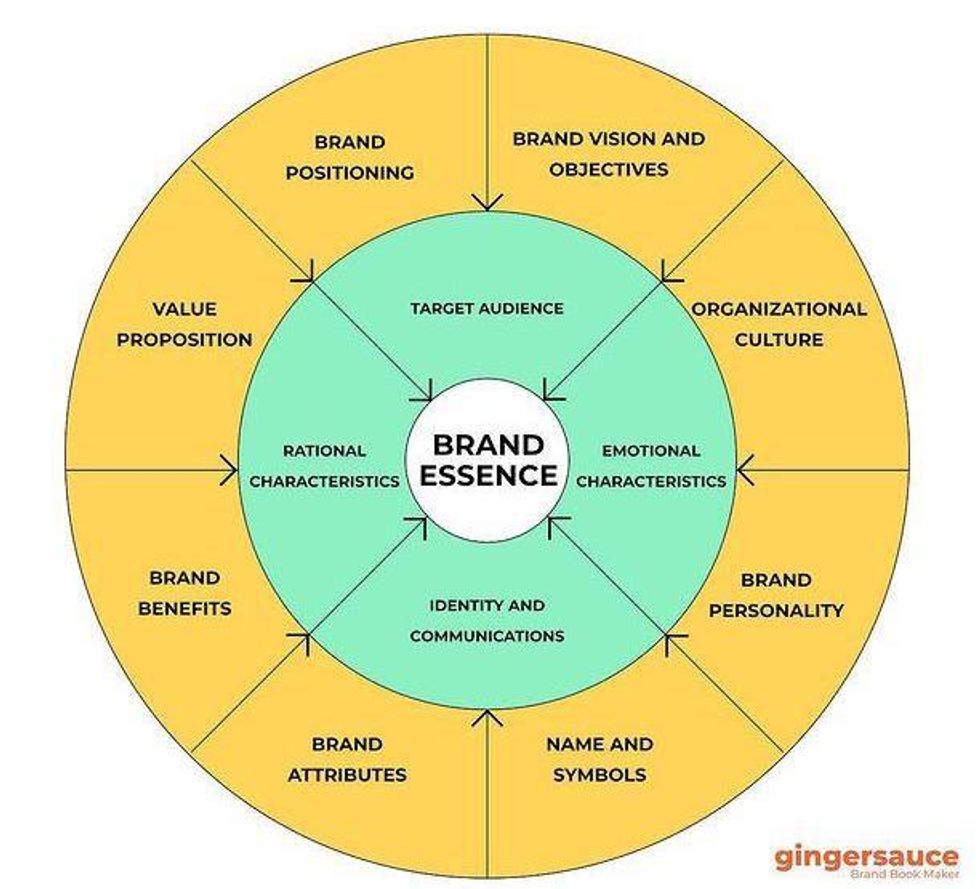
My husband is a big Raider Nation fan. He’s been a fan for almost 40 years, very loyal even though the Raiders haven’t done well in the past ten years. He gets grief about this all the time from family and friends. He started liking the Raiders in college when he would get free tickets from USC to see them at the Coliseum. Since the Raiders' inception in 1960, they have accumulated fans from around the world. They are loved for their rebellious image.
What drew my husband to the Raiders was an emotional connection to their toughness, swagger, “bad boys” of football, and that they were fun to watch. This was quite unique at the time vs. other NFL teams. These words—toughness, swagger, and “bad boys”—embody the Raider Nation brand essence.
Companies that can tap into this emotional connection with their customers benefit from greater loyalty and ROI. This emotional connection starts with your brand essence. Let’s look at what a brand essence is, why it’s important, and how to develop one for your brand.
Listen To The Article
What Is Brand Essence?
Brand essence is the soul or DNA of your brand. It helps create connections between your customers and your brand, using emotional and intangible elements. It’s typically described in one to three words and includes the following:
- The unique selling point that makes you different from your competitors
- Values that articulate what you stand for
- Goals describing what you expect to accomplish with your brand
- Emotional experiences customers have with your brand
Here are a few companies that have similar products and target audiences but their brand essence differs:
- Coca-Cola = Happiness | Pepsi = Youthfulness
- BMW = Driving Pleasure | Porsche = Exclusive Sports Car
- Nike = Innovation & Inspiration | Adidas = Relentless
Once you’ve defined your brand essence, it’s easier to guide all marketing activities consistently with a clear message that speaks to your audience and aligns with your values.
Importance Of Brand Essence

Consumers are demanding more from brands in how they conduct business when it comes to the environment, diversity, politics, and equality. Millennials are the largest population of 72 million, with 83% saying it’s important for companies they buy from to align with their beliefs and values. An Ipsos survey found that, across 25 countries surveyed, 70% of consumers indicate they would buy from brands they believe reflect their principles. With these consumer shifts, it’s more important than ever for brands to have a strong brand strategy including a purpose, values, ethics, authenticity, uniqueness, and a compelling story. This includes a clearly defined and effective brand essence.
With a clearly defined brand essence, brands know who they are, how they want to be perceived, and how to consistently communicate to consumers so they know what to expect each time they interact with your brand. It takes 5 to 7 impressions for consumers to remember a brand. For example, even with shifting global consumer trends, Walt Disney’s core brand essence of “magical” has not changed over the years.
How To Develop Your Brand Essence

Defining your brand essence starts with understanding who you are, what sets you apart from the competition, and what emotions your brand brings up with your consumers. The Brand Essence Wheel is a template for defining your brand. Starting from the outside and moving in, this process will help define who you are and what your brand essence is, creating a brand people love.
Let’s look at the Brand Essence Wheel in more detail.
OUTER LAYER:
Brand Vision & Objectives
The brand vision is what the brand aims to achieve in the future. Brand objectives are the measurable goals for your brand.
Organizational Culture
Organizational culture is the collection of values, beliefs, expectations, and practices that guide and inform the action of employees.
Brand Personality
A brand personality can be defined as the set of human characteristics associated with your brand. It’s communicated through tone of voice, visuals, and even policies. They’re expressed as adjectives that convey how you want people to perceive your brand. For example, is your brand cheerful, funny, friendly, youthful, innovative, spirited, dependable, responsible, credible, sophisticated, rebellious, cunning, powerful, honest, and so on?
Name & Symbols
A brand symbol is a visual representation of your company. It can be your name or a visual design. Brand symbols can also be called “brand marks.”
Brand Attributes & Benefits
Brand attributes are quality or features regarded as a characteristic of your brand that resonates with your customers. These are the plain facts about your product—size, weight, functionality, etc. Brand benefits are the values that customers place on your product. In summary, brand attributes show what your product does while brand benefits show what it does for them.
Value Proposition
A value proposition summarizes a promise of value, delivered to customers should they choose to buy your product or service. A good value proposition, as defined by Peep Laja, explains three things:
- Relevancy: Explains how your product solves customers' problems or improves their situation.
- Quantified Value: Delivers specific benefits.
- Differentiation: Tells the ideal customer why they should buy from you and not from the competition.
Your value proposition needs to be front and center across your communication (i.e., homepage, marketing materials, videos, social media, etc.). If you don't state why consumers should buy from you and what the value is that you provide, you'll lose them.
Brand Positioning
Brand positioning is the process of positioning your brand in the mind of your customers based on your brand purpose and values that gives you a competitive advantage.
A well-developed and implemented brand position provides a sustainable competitive advantage, communicates value to customers, is a vehicle to help manage brand consistency, and impacts the bottom line.
MIDDLE LAYER:
Target Audience
A target audience is an ideal customer who wants to purchase your product or service. Targeting a specific audience does not mean that you are excluding customers who do not fit your criteria. Instead, it allows you to focus your dollars and message on the right people who are most likely to buy from you. This is the most effective way to reach your audience while maximizing your spending. When you market to a highly specific target audience, you can solidify your brand voice and develop messaging that resonates with them.
Emotional Characteristics
When products appeal to customers emotionally through characteristics like love, happiness, power, fear, anger, surprise, security, disgust, and ego gratification.
Rational Characteristics
Rational characteristics include when buyers compare products based on price, features, and benefits, and then make a decision on whether to buy or not.
Identity & Communications
The brand identity includes all of the visible and written elements of the brand such as color, design, logo, and messaging that identify and distinguish the brand in the consumer's mind.
Creating a strong brand is becoming increasingly important as consumers demand more from companies. Your brand essence is the heart and soul of your brand that differentiates you from the competitors. Start building your brand leadership today. You’ve got this!
- The Importance Of Branding For Your Business - Work It Daily ›
- How To Shape Perceptions With A Brand Messaging Framework ... ›
- #1 Rookie Mistake You Shouldn't Make With Brand Messaging ... ›
- How To Connect With Consumers On An Emotional Level - Work It ... ›
- How To Take Charge Of Your Visual Identity To Make It Unique - Work It Daily ›
- How To Identify Your Company's Target Audience - Work It Daily ›
- How Brands Can Succeed In The Digital World - Work It Daily ›

 Bigstock
Bigstock Bigstock
Bigstock Bigstock
Bigstock


